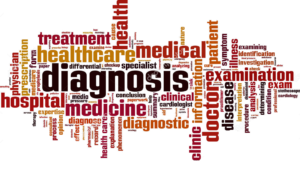
Duchenne Muscular Dystrophy (DMD) Diagnosis
Early Signs and Symptoms: DMD presents in early childhood. Boys often have delayed motor milestones: they may sit, crawl, or walk later than peers (e.g. late walkers, short stature in infancy). In toddlers and preschoolers, common findings include pseudohypertrophy (enlarged calves/thighs due to fibrotic muscle), frequent falls, clumsiness, and difficulty climbing stairs or running. A classic indicator is the Gowers’ sign: affected boys use their hands to “walk” up their legs when rising from the floor. By school age, most children develop a waddling, toe-walking gait and may stick out their belly to compensate for hip weakness. About 30% of boys have some cognitive or language delay (learning difficulties, speech delay, or attention issues).
Age of Diagnosis: Symptoms usually appear by toddler age. In fact, “signs [of DMD] usually appear between 12 months and 3 years of age”. However, formal diagnosis is often delayed. Most boys are not diagnosed until ages ~4–5 years. For example, one review found the average diagnosis age was ~4.1 years in a neuromuscular center. There is typically a 1–2 year lag from first symptoms to diagnosis. (These delays are important because early diagnosis allows earlier intervention.) In practice, DMD is “typically diagnosed between the ages of 2 and 5” years.
Diagnostic Tests and Procedures: Diagnosis starts with a thorough history and physical exam. A high index of suspicion arises when a young boy has characteristic symptoms or a family history of muscular dystrophy. The key tests include:
• Serum muscle enzymes: A blood test for creatine kinase (CK) is almost always the first step. CK levels in DMD are dramatically elevated – often 10–20 times above normal by about age 2. Very high CK in a toddler with motor delay strongly suggests a dystrophinopathy.
• Genetic testing: Confirmatory diagnosis relies on DNA analysis of the dystrophin (DMD) gene. Modern testing first looks for large deletions/duplications (~70–80% of DMD mutations). If no deletion is found, sequencing (including multiplex PCR or next-generation sequencing) is used to find smaller mutations or point mutations. A detected pathogenic DMD mutation confirms the diagnosis.
• Muscle biopsy: In the past, a biopsy was often done. Today it is usually reserved for unclear cases. Biopsy shows absent dystrophin protein on immunostaining or Western blot. Finding essentially no dystrophin protein is diagnostic of DMD, whereas some (truncated) dystrophin suggests Becker MD.
• Cardiac tests: Even at diagnosis, cardiac evaluation is indicated. An electrocardiogram (ECG) and echocardiogram (echo) are obtained to look for early cardiomyopathy changes. All boys with DMD eventually develop heart muscle disease. (In older patients, cardiac MRI is also used.)
• Neurophysiology: Electromyography (EMG) and nerve conduction studies (NCS) are not specific but may be used. Stanford experts note that electrodiagnostic studies can assess muscle function as part of the workup. These help exclude other neuromuscular disorders.
• Other tests: Once DMD is confirmed, baseline assessments (pulmonary function tests, spine imaging, etc.) are done as part of care. Newborn screening (see below) and prenatal testing (if family history) are increasingly possible.
Recent Advances in Diagnostic Methods: Diagnostic technology for DMD is evolving rapidly. Key recent developments include:
• Expanded genetic testing (NGS): Next-generation sequencing now allows comprehensive analysis of the entire 2.2 Mb DMD gene in one test. For example, combining MLPA (deletion/duplication) with NGS can detect essentially all DMD mutations in patients and even carriers. This means nearly all boys with DMD can be diagnosed by a single genetic test.
• Newborn screening (NBS): In 2019 the FDA authorized the first CK-MM blood assay for DMD newborn screening. Pilot programs in New York and other states are using two-tier NBS: first measuring CK-MM on the routine newborn bloodspot, then reflexing to DMD gene sequencing if CK is high. Early results show this approach can identify affected infants before symptoms. Stakeholders are actively discussing adding DMD to routine newborn panels. (Note: Offering newborn DMD screening is still under evaluation and not yet universal.)
• Prenatal and fetal testing: Carrier women can now use methods like cell-free fetal DNA or preimplantation genetic testing in assisted reproduction to identify DMD in utero. These are extensions of the genetic test technology and are used when there is a known family mutation. However, non-invasive prenatal tests (NIPT) for DMD are still experimental. Researchers have proposed targeted NIPT or early genome sequencing for DMD, but these remain investigational.
• Emerging biomarkers and imaging: Research is ongoing into new diagnostic tools. Quantitative muscle MRI can noninvasively detect early muscle changes. Experimental blood biomarkers (e.g. serum microRNAs) also show promise to flag muscle damage before overt symptoms. These methods are not yet standard of care.
Note: Statements about experimental screening (newborn NBS, NIPT, novel biomarkers) are preliminary or proposed; their clinical use is still being evaluated.

